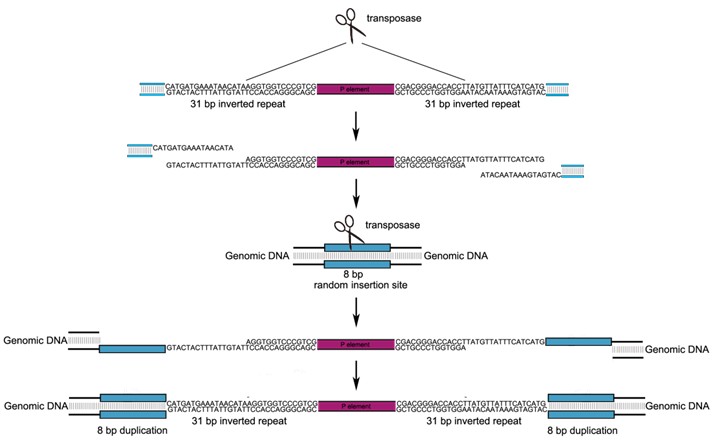P-element is a widespread transposon in the wild type Drosophila melanogaster genome. It can be randomly moved from one position in the genome to another, changing the original DNA sequence which may lead to changes of gene function. P-element was firstly discovered in 1982 and is applied to the study of Drosophila genomics by producing transgenic Drosophila.
P-element has two 31 bp inverted repeats at each end of the sequence. Its transposase recognizes and cut at both of the inverted repeats, then cut again at a random location on the genome, creating an 8 bp overhang incision. The cut-out P-element fragment is then inserted into the new location. The overhang left will be repaired by DNA repair mechanism.

The 31 bp inverted repeat sequence at both end and its inside 150 bp sequence is essential for transposition reaction. In order to ensure the stability of the P-element construct, the P-element vectors lack the transposase gene and only contain the essential P element recognition sequences, usually with screening marker gene (e.g. mini-white or yellow) in between. The construct by it alone can not complete the transposition reaction, it needs to be co-injected with a helper plasmid carrying the transposase gene to be a “help”. The commonly used helper plasmid is △ 2-3, the sequence between ORF 2 and 3 of the original transposase gene was removed, guaranteeing expression the functional transposase in different Drosophila tissues.
P-element transgenesis is wild used in creating Drosophila transgenic lines, and its insertion into the chromosome is relatively random. The insert location can be precisely detected by inverse PCR using primers specific to the P-element recognition sequence at both ends.
For more info, please refer to: Flybase/Dmel\P-element

